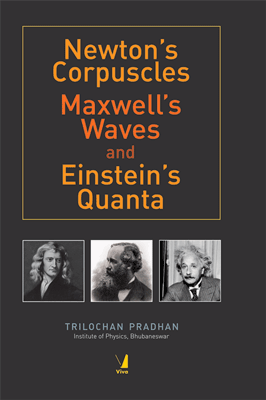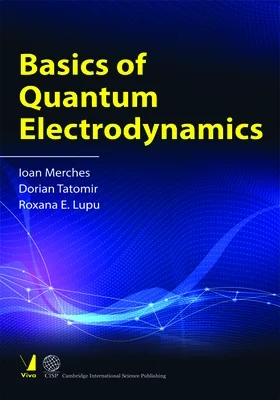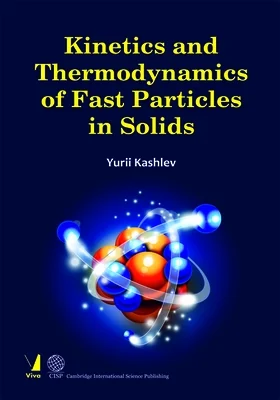Newton's Corpuscles, Maxwell's Waves and Einstein's Quanta
Newton's Corpuscles, Maxwell's Waves and Einstein's Quanta
₹805.50 ₹895.00 Save: ₹89.50 (10%)
Go to cartISBN: 9788130922157
Bind: Hardbound
Year: 2017
Pages: 120
Size: 153 x 229 mm
Publisher: Viva Books Originals
Sales Territory: Worldwide
Description:
While Newton considered light as moving streams of tiny corpuscles and Maxwell regarded it as wave motion, Einstein gave a new dimension to it by postulating that it consists of particle • like quanta whose energy and momentum are related to frequency and wave number in terms of Plank’s constant. The purpose of this book is to show that these three approaches to the dynamics of light are intimately related.
The book deals with three facets of light, corpuscles, waves and quanta, by three great physicists • Newton, Maxwell and Einstein showing how these are inter-related in the sense that one can pass on from Newton’s corpuscular theory to Maxwell’s wave theory and therefrom to Einstein’s quantum theory through prescription of wavization and quantization.
In this book, the author has presented a purely classical theory simultaneously embracing corpuscular and wave aspects in which corpuscles moving in accordance with Fermat’s principle of least optical path acquire a Maxwellian wave nature through the wavization prescription. This is followed by quantization of Maxwell’s theory.
Optics, the science of light as we may call it, is a fascinating subject. We cannot see objects without the aid of light. Newton thought of light rays to be streams of tiny massless particles called corpuscles which cause sensation of vision upon striking the retina of our eyes. But how can such corpuscles coming from two sources interfere to produce dark and bright fringes unless they kill each other at the site of dark fringes’ This probably led Thomas Young to say that light is some kind of wave motion. But what kind’ The answer to such a question came from Maxwell, who showed that it is electromagnetic wave motion. But when ultraviolet light was seen to behave as particles, Einstein put forth his quantum theory to explain this.
The three faces of light • Newton’s Corpuscles, Maxwell’s Wave and Einstein’s Quanta, are subject matter of this book.
Target Audience:
Students and Academicians of Physics.
Contents:
Preface
Introduction
Chapter 1: Newton's Corpuscles’ Introduction • Lagrangian Formalism • Fermat's Principle of Least Optical Path • Principle of Least Time • Orbits of Corpuscles in Coulomb Media • Ray Equation Method • Hamilton’Jacobi Method • Wavization of Newton's Corpuscles • Introduction • Bohr’Sommerfeld Wavization • de Broglie Wavization • Schr’dinger Wavization • O (4) Group for Corpuscles in a Coulomb Media • Maxwell's Equations for Wavized Corpuscles • Wave’Corpuscle Duality • References
Chapter 2: Maxwell's Waves • Introduction • Solution of Maxwell's Equations • Plane Wave Solution • Spherical Wave Solution • Covariant Form of Maxwell's Equations • Polarization Properties of Electromagnetic Waves • Maxwell's Equations in Terms of Potentials • Scalar and Vector Potentials • Pseudoscalar and Pseudovector Potentials • Energy, Momentum and Angular Momentum of the Electromagnetic Field • Energy • Momentum • Angular Momentum • Oscillator Expansion of the Electromagnetic Field • Symmetries of the Electromagnetic Field • Introduction • General Formalism • Poincar’’ Invariance • Scale Invariance • Special Conformal Invariance • Duality Invariance • Coherence Properties of Maxwell's Waves • Introduction • Interference of Amplitudes • Interference of Intensities • References
Chapter 3: Einstein's Quanta • Introduction • Black-body Radiation • Photoelectric Effect • Compton Effect • Epilogue to Einstein's Theory • Quantization of Maxwell's Theory • First Quantization • Second Quantization • Covariant Quantization • Conservation Laws in Quantized Maxwell Field • Introduction • Poincar’’ Invariance • Scale Invariances • Special Conformal Invariance • Conformal Group • Duality Invariance • Supersymmetry Algebra • Coherence Properties of Quantized Maxwell Field • First Order Coherence • Second Order Coherence • Correlation Experiments • Single Photon Source • Wave Nature of a Single Photon • Uses of Single Photon Sources • Local Symmetries and Interactions of Photons • Introduction • Local Duality Invariance • Local Scale Invariance • Local Lorentz Invariance • Photon as a Composite Particle • References
Index
About the Author:
Trilochan Pradhan, Founder Director of the Institute of Physics, Bhubaneswar, has been carrying out teaching and research work in the Institute since its inception in 1974. He obtained his Ph.D. degree from University of Chicago in 1956, headed the Theoretical Nuclear Physics Division of Saha Institute of Nuclear Physics, Kolkata for a decade (1964’74) and was Vice-Chancellor of the Utkal University, Bhubaneswar for one term (1989’91).
Professor Pradhan is the author of two books: (a) The Photon, published by Nova Science Publisher, New York 2001, (b) Quantum Mechanics, published by Universities Press, Hyderabad 2008 and several research papers.







